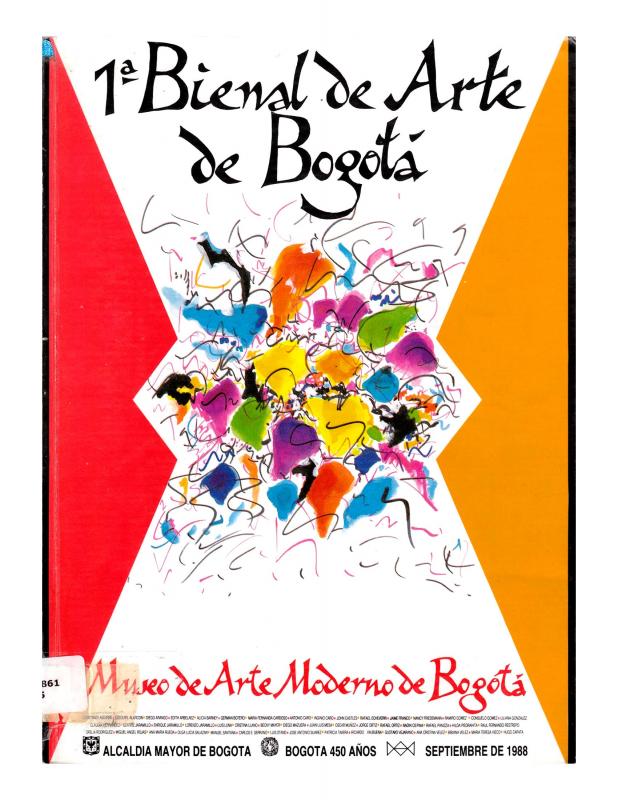Ante América [Regarding America] was one of the most important artistic events to take place in Colombia in the early 1990s. It was part of the celebrations for the Five Hundredth anniversary of the arrival of the Spaniards, and was subtitled “The Meeting of Two Worlds” in an attempt to minimize the association with the old term “Discovery of America,” though this did not satisfy all critics. The exhibition catalogue’s introduction is valuable because it provides insight into the curatorial approach that sought to generate spaces for reflection that would help to interpret the main ideas that were up for discussion: identity, multiculturalism, globalization, and postmodernism. These were all subjects that were analyzed in great depth during the early years of the decade, and were the subject of discussion in the theoretical sessions that were organized in connection with “Ante América: Arte, cultura y posmodernidad en América Latina” [Regarding America: Art, Culture, and Postmodernism in Latin America] [see doc. # 1098322]. The event also prompted an outpouring of written responses. Months later, in 1993, essays and articles concerning the event by a number of critics and historians appeared in the Revista Arte Internacional: América Latina: identidad y arte [International Art Magazine: Latin America: Identity and Art] (number 15-16 from 1993) published by the Museo de Arte Moderno [Museum of Modern Art] in Bogotá, such as “Ante América ¿Qué da a una persona su identidad étnica o cultural?” [Regarding America: What Gives People Their Ethnic or Cultural Identity?] by Barbara Bloemink, and “Las tres Américas” [The Three Americas] by Javier Gil, and “Ante América” by Ivonne Pini published in the Revista Arte en Colombia [Art in Colombia Magazine].
At the time there was also a certain amount of contempt in artistic circles for exhibitions such as Magiciens de la Terre (Magicians of the Earth), presented in 1989 at the Centre Georges Pompidou in Paris, which was a collection of all the stereotypes about the folklore, myths, and “marvelous things” associated with Latin American art during this period. It was significant that Ante América was organized as part of the Five Hundredth Anniversary celebrations because that was a most appropriate time to analyze such works, as had been done at other similar events in Latin America and elsewhere: El desafío a la colonización [Challenging Colonization] at the IV Bienal de la Habana [4th Havana Biennial] (1991), Voces de Ultramar [Overseas Voices] at the Casa de América(Madrid), and Novia del Sol, 500 años América Latina y los Países bajos [Bride of the Sun, 500 Years, Latin America and the Low Countries] curated by Catherine Zegher and Paul Vadenbroeck at the Musée Royal de Beaux-Arts [Royal Museum of Fine Arts], Belgium.
Ante América brought together artists with “many cultural roots” (African-Americans, Native Americans, African-Caribbeans and Chicanos), including the following artists who were born in Colombia: María Fernanda Cardoso, Tusas de Maíz [Corn Cobs] (1986); Antonio Caro, Proyecto 500 [Project 500] (1990), Homenaje a Quintín Lame [Tribute to Quintín Lame] (1979), and Hágalo usted mismo [Do It Yourself] (1992); Beatriz González La pesca milagrosa [Miraculous Fishing] (1992) and El altar [The Altar] (1990); María Teresa Hincapié; Doris Salcedo, Atrabiliarios [Evil Tempered Ones] (1991-1992) and Sin título [Untitled] (1989-1992); José Antonio Suárez, Dibujos de 1 a 5 [Drawings From 1 to 5], Todos los ladrones [All the Thieves] (1991), and Sin título [Untitled] (1991-1992).

